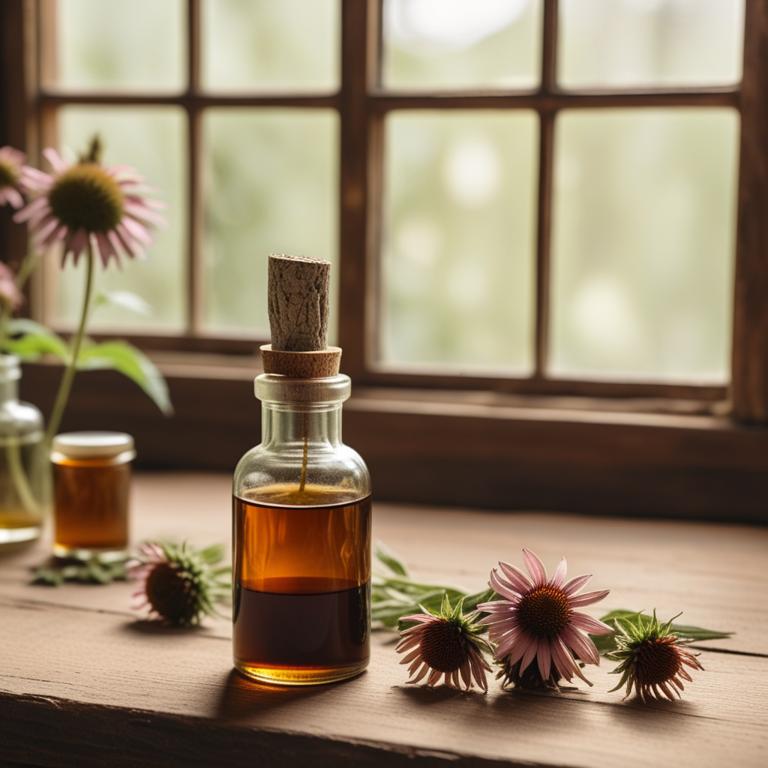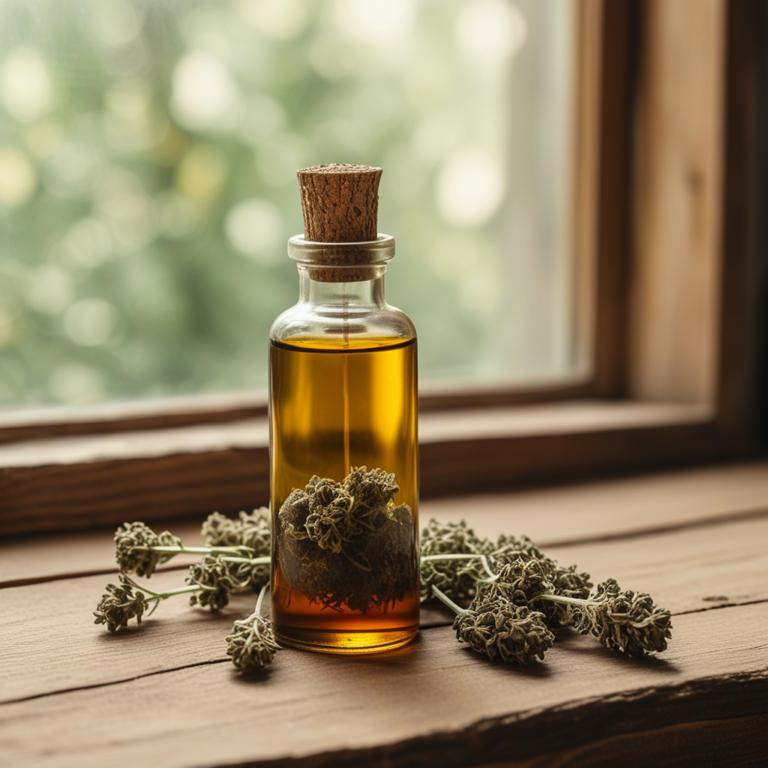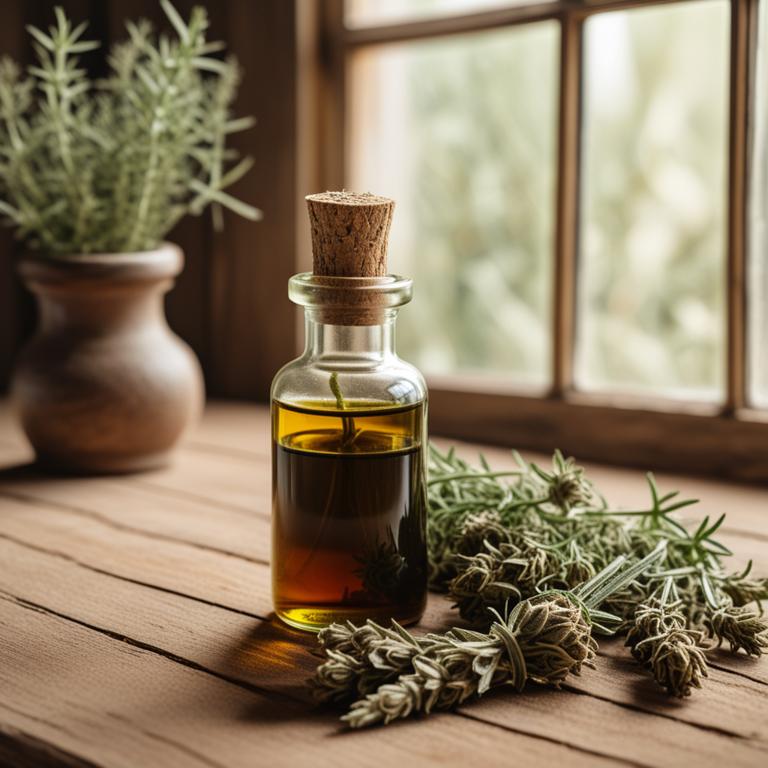7 Best Herbal Tinctures For Chest Congestion

Herbal tinctures for Chest congestion are liquid extracts made from various herbs that are used to treat respiratory issues, such as congestion, coughs, and colds.
They offer several benefits, including quick relief, reduced risk of over-the-counter medication side effects, and the potential to tackle the root cause of the congestion.
Some examples of herbal tinctures used to treat chest congestion include Echinacea, which boosts the immune system, Thyme, which has anti-inflammatory properties, and Ginger, which helps to thin mucus and reduce inflammation.
Additionally, other herbs like Mullein, Elecampane, and Hyssop are also commonly used due to their expectorant and anti-inflammatory properties, making them effective in loosening and clearing mucus from the lungs.
According to the study, tinctures for chest congestion containing thyme and primrose root fluid extracts, which include a small amount of ethanol (4.9%), have been proven safe for children aged 1-12 years, with favorable efficacy and tolerability results.
Below there's a list of the 7 best herbal tinctures for chest congestion.
- 1. Eucalyptus globulus tinctures
- 2. Glycyrrhiza glabra tinctures
- 3. Zingiber officinale tinctures
- 4. Urginea maritima tinctures
- 5. Echinacea purpurea tinctures
- 6. Thymus serpyllum tinctures
- 7. Rosmarinus officinalis tinctures
Also you may be interested in...
TODAY'S FREE BOUNDLE
Herb Drying Checklist + Herbal Tea Shopping List + Medicinal Herbs Flashcards
Enter you best email address below to receive this bundle (3 product valued $19.95) for FREE + exclusive access to The Aphotecary Letter.
$19.95 -> $0.00
1. Eucalyptus globulus tinctures

Eucalyptus globulus tinctures have been traditionally used to treat chest congestion, a common respiratory ailment characterized by difficulty breathing and coughing.
The expectorant and anti-inflammatory properties of this herbal preparation help to relieve congestion by loosening mucus and reducing inflammation in the airways, making it easier to breathe.
The bioactive constituents, including eucalyptol, limonene, and alpha-pinene, contribute to its therapeutic effects by acting as a bronchodilator, reducing coughing, and relieving inflammation.
Regular use of Eucalyptus globulus tinctures can provide relief from chest congestion, reduce the severity of symptoms, and promote overall respiratory health.
Related Study
According to "Zhongguo Zhong yao za zhi = Zhongguo zhongyao zazhi = China journal of Chinese materia medica", Eucalyptus globulus tinctures for chest congestion may be effective in reducing inflammation and hypersecretion of airway mucins, as shown in a rat model study where the tincture significantly decreased mucin content and MUC5ac expression in the trachea and bronchiole epithelium.
2. Glycyrrhiza glabra tinctures

Glycyrrhiza glabra tinctures have been traditionally used to treat chest congestion due to their anti-inflammatory and expectorant properties, which help to reduce inflammation and loosen mucus in the airways.
The bioactive constituents of Glycyrrhiza glabra, including glycyrrhizin and flavonoids, have been shown to possess mucolytic and bronchodilatory effects, helping to relieve congestion and improve respiratory function.
By reducing inflammation and promoting the clearance of mucus, Glycyrrhiza glabra tinctures can help to alleviate symptoms of chest congestion, such as coughing and shortness of breath.
The benefits of using Glycyrrhiza glabra tinctures to treat chest congestion include their ability to provide rapid relief, promote respiratory health, and support the body's natural defenses against respiratory infections.
Related Study
According to "Mini reviews in medicinal chemistry", Glycyrrhiza glabra tinctures for chest congestion may be beneficial in managing respiratory infections caused by viruses and bacteria due to its ability to modulate the immune system, inhibit virus growth, produce anti-inflammatory activity, and inactivate viruses.
3. Zingiber officinale tinctures

Zingiber officinale tinctures, derived from the rhizome of the ginger plant, have been used to treat chest congestion due to their expectorant and anti-inflammatory properties.
The tincture helps to treat this ailment by loosening and removing mucus from the airways, reducing congestion and promoting easier breathing.
The bioactive constituents of Zingiber officinale, including gingerols and shogaols, exhibit anti-inflammatory and antioxidant activities that aid in reducing inflammation and combating the underlying causes of congestion.
Regular use of Zingiber officinale tinctures has been associated with several benefits, including rapid relief from chest congestion, reduced coughing and wheezing, and improved respiratory health.
4. Urginea maritima tinctures

Urginea maritima tinctures have been traditionally used to treat chest congestion due to their expectorant and anti-inflammatory properties.
The bioactive constituents, such as galantamine and other alkaloids, help to break down mucus and reduce inflammation in the airways, making it easier to breathe.
By increasing mucus production and promoting its expulsion from the lungs, Urginea maritima tinctures provide relief from congestion and coughs.
The benefits of using Urginea maritima tinctures to treat chest congestion include reduced symptoms, faster recovery, and a decrease in the risk of complications from prolonged congestion.
5. Echinacea purpurea tinctures

Echinacea purpurea tinctures have been used to treat chest congestion due to their anti-inflammatory and antimicrobial properties, which help to reduce swelling and combat infections in the respiratory system.
This herbal preparation is believed to help treat chest congestion by reducing the severity and duration of colds and flu, making it easier to breathe and recover.
The bioactive constituents of Echinacea purpurea, including alkylamides, caffeic acid derivatives, and polysaccharides, are responsible for its immunomodulatory and antiviral effects, which help to boost the immune system and fight off pathogens.
The benefits of using Echinacea purpurea tinctures to treat chest congestion include reduced symptoms, faster recovery, and improved overall health, making it a popular natural remedy for respiratory ailments.
Related Study
According to "Molecular nutrition & food research", Echinacea purpurea tinctures for chest congestion may be considered safe to use, with a low potential to generate cytochrome P450 drug-herb interactions and no verifiable reports of adverse events.
6. Thymus serpyllum tinctures

Thymus serpyllum tinctures are a natural remedy used to treat chest congestion, a common respiratory issue characterized by coughing, wheezing, and difficulty breathing.
The antitussive and expectorant properties of Thymus serpyllum tinctures help to relieve coughing and facilitate the removal of mucus from the lungs, providing relief from congestion.
The bioactive constituents of Thymus serpyllum, including thymol, carvacrol, and borneol, contribute to its therapeutic effects by exhibiting antimicrobial, anti-inflammatory, and spasmolytic activities, making it an effective treatment for chest congestion.
By using Thymus serpyllum tinctures, individuals can experience the benefits of reduced inflammation, improved respiratory function, and enhanced overall well-being.
7. Rosmarinus officinalis tinctures

Rosmarinus officinalis tinctures, derived from the leaves of the rosemary plant, offer a natural remedy for treating chest congestion.
The anti-inflammatory and expectorant properties of this herbal preparation help to relieve congestion by reducing inflammation in the respiratory tract and promoting the removal of mucus.
Bioactive constituents such as camphor, borneol, and rosmarinic acid in Rosmarinus officinalis tinctures work together to ease breathing and alleviate coughs.
The benefits of using Rosmarinus officinalis tinctures for chest congestion include reduced symptoms, improved respiratory function, and a natural alternative to pharmaceutical medications.